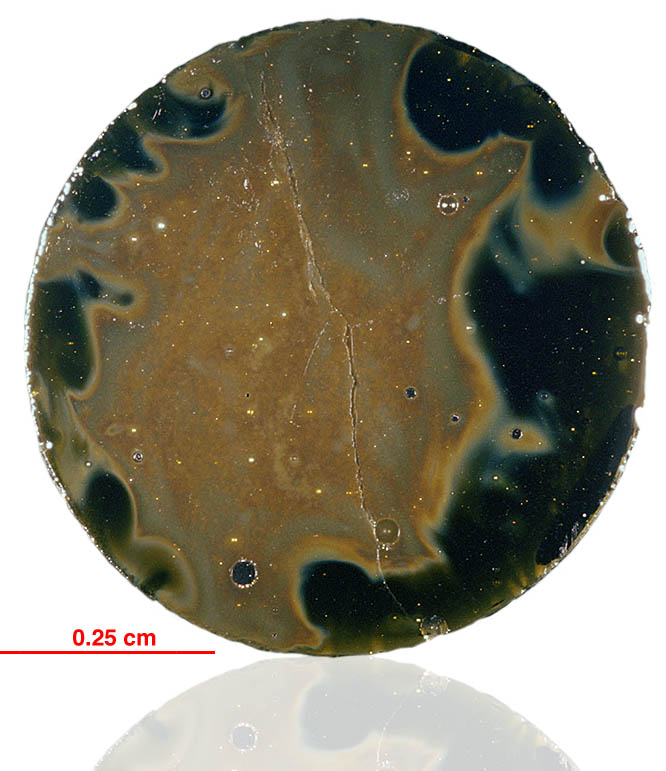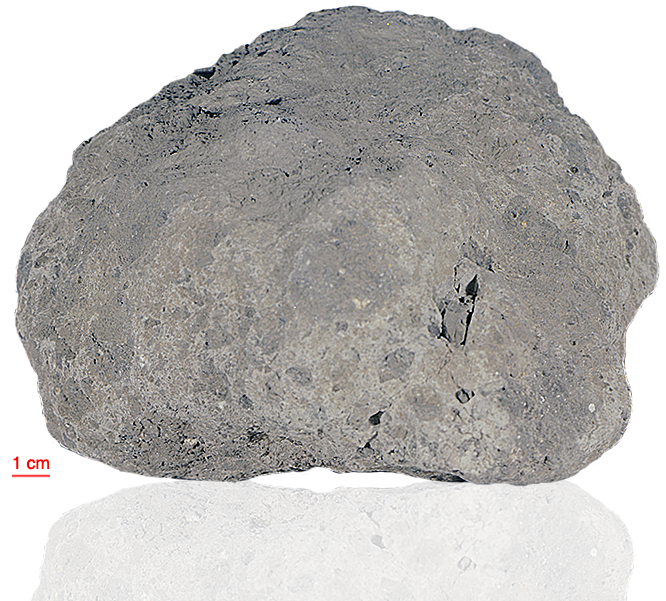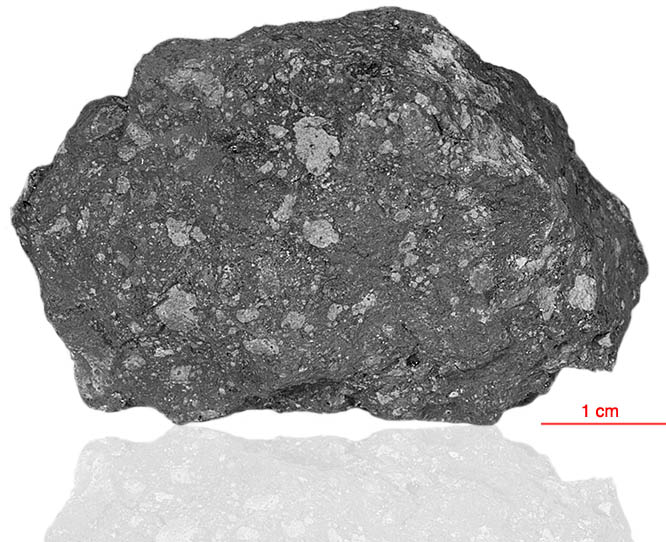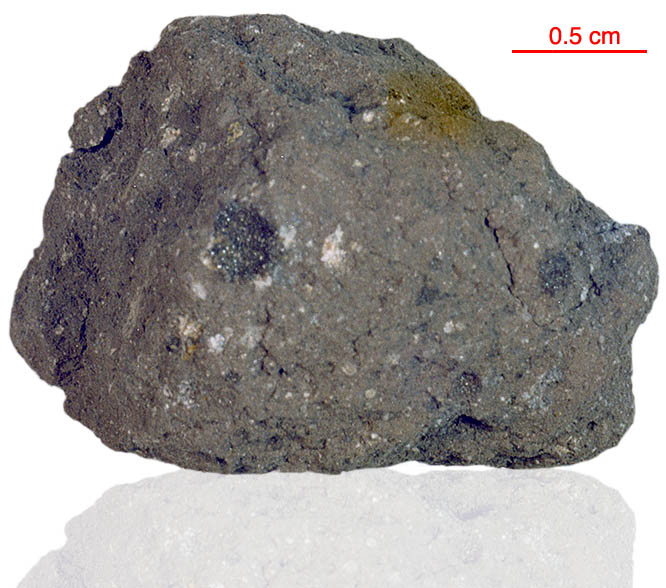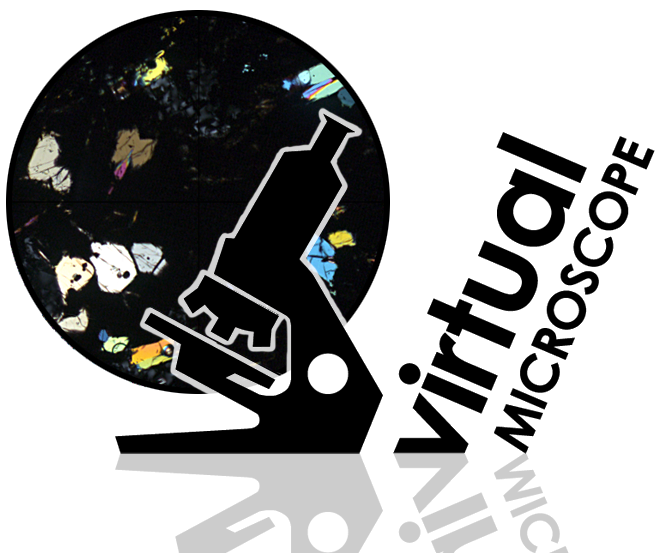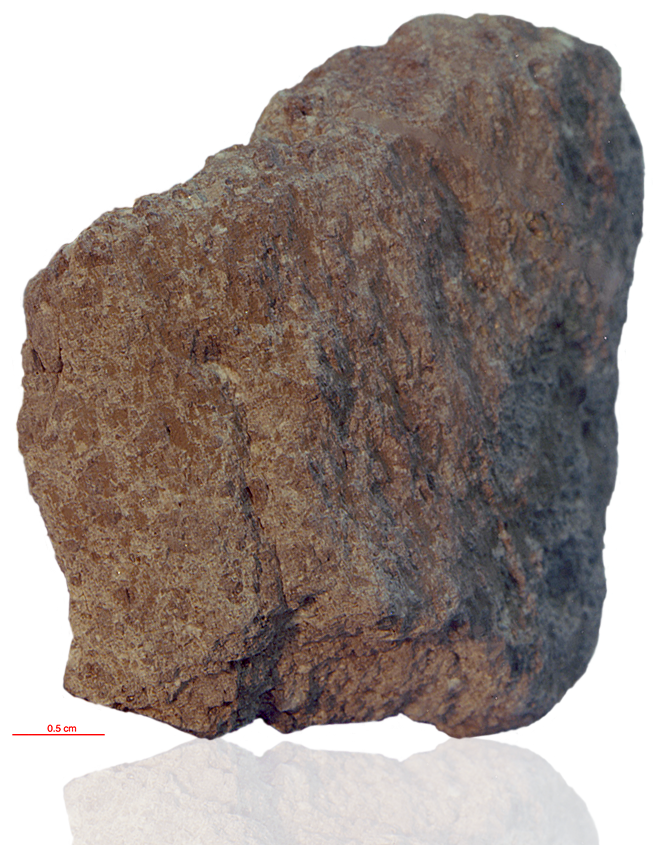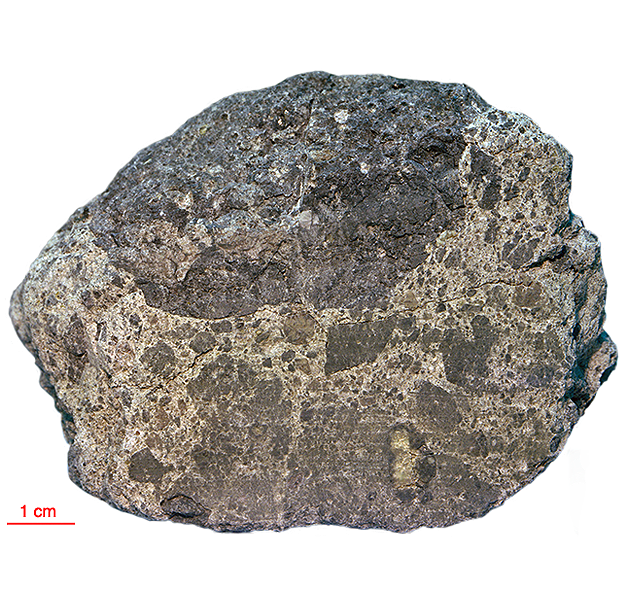
Fact sheet
14066 is moderately friable with 15 to 20 % of subangular dark clasts and a few light clasts in a fine-grained light matrix. The matrix has interlocking grains of 5-20 micron plagioclase and pyroxene with 5 micron ilmenite. The matrix makes up 60-70 percent of the rock. The sample has many fractures, some penetrating. In reflected light both troilite and metallic iron can be seen.
The sample weighed 509.8 grams before analysis and is 4.06±0.14 billion years old (Rb/Sr).
The mounting resin of this thin section has deteriorated over time and now contains clusters of feathery crystallites around the margins of the thin section.
Further details of this and other Apollo samples are here: http://curator.jsc.nasa.gov/lunar/
The Apollo 14 landing site was in a region formed by impact-basin debris.
Most of the 42 kilograms of rocks and soil collected on Apollo 14 are breccias (rocks that are composed of fragments of other, older rocks). In some cases, the rock fragments that form a breccia are themselves breccias. Such rocks obviously have experienced complex histories with multiple generations of impact events. Some breccias were heated enough that some of the material in the rock was melted.
Apollo 14 was launched on 31 January 1971.

